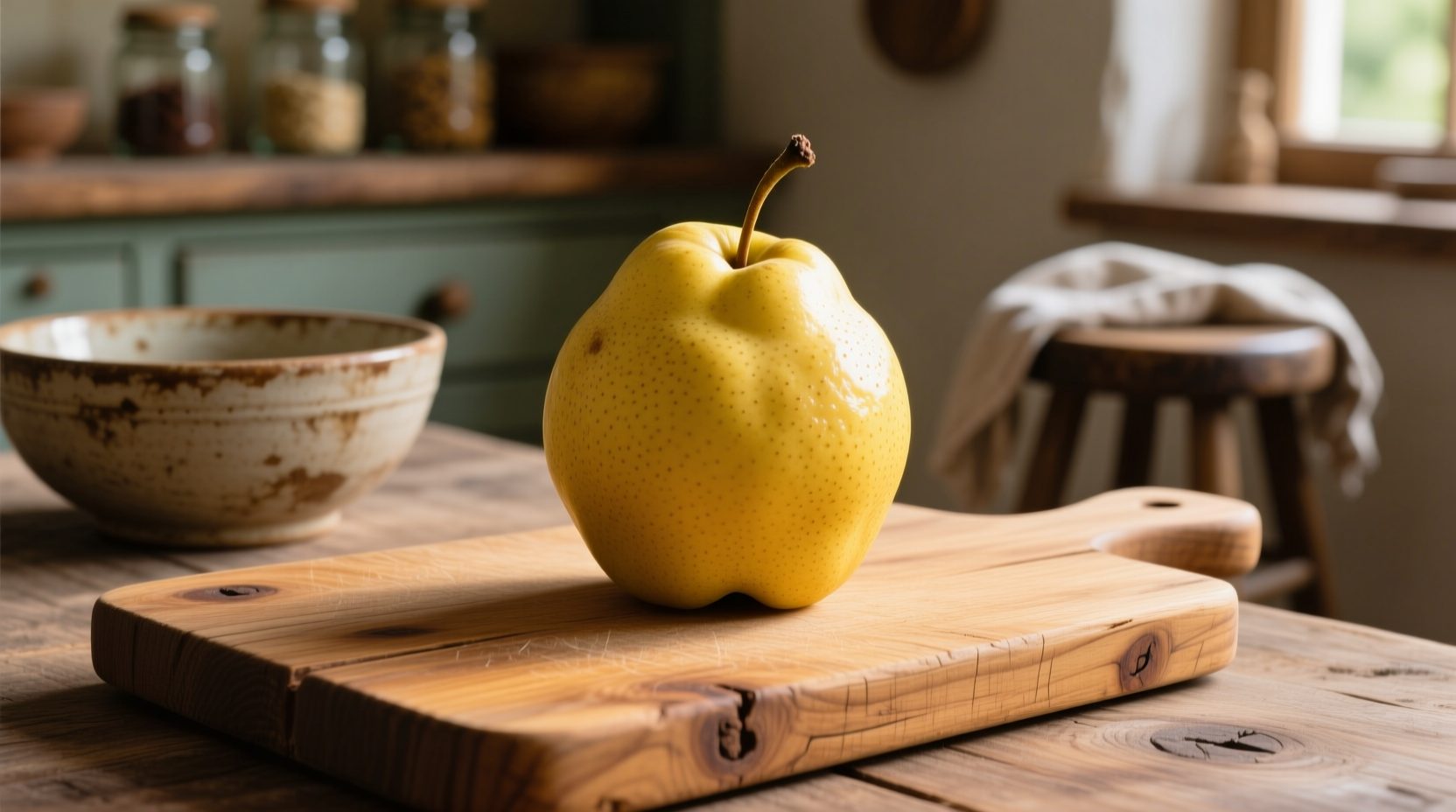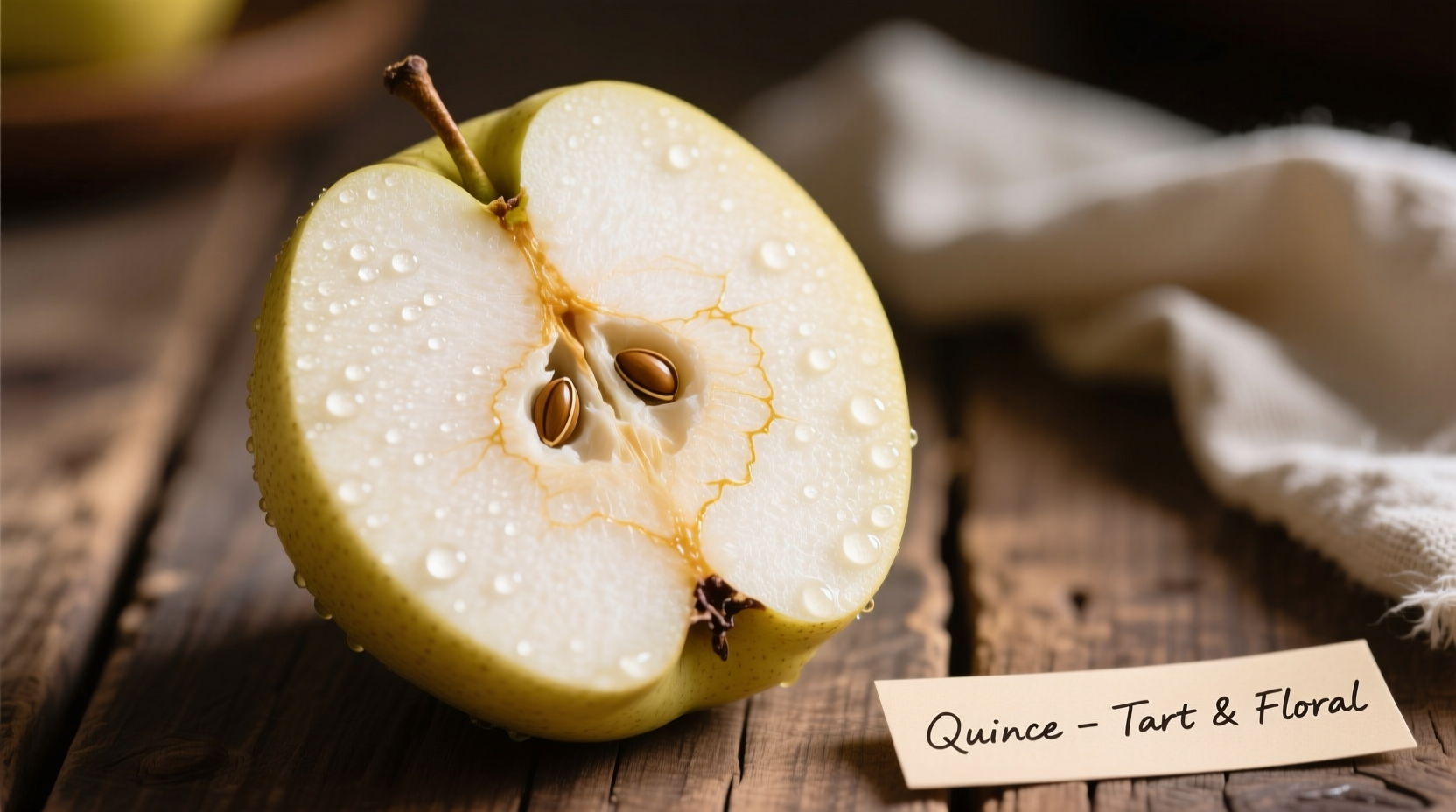The Surprising Flavor Journey of Quince
When you bite into a raw quince, you'll experience an unexpectedly firm texture and mouth-puckering astringency that makes most people wonder why anyone would eat this fruit. But here's the remarkable secret: when cooked, quince undergoes a magical transformation that reveals its true culinary potential. Understanding this flavor evolution is essential for anyone wanting to explore this ancient fruit's unique characteristics.
Raw Quince: More Than Just Tart
Contrary to popular belief, raw quince isn't simply "sour"—it presents a complex flavor profile that many first-time tasters misinterpret. The initial taste features pronounced tannins that create that characteristic mouth-drying sensation, similar to strong black tea. Beneath this astringency lies subtle citrus notes reminiscent of grapefruit peel, with delicate floral undertones that hint at its future potential.
Food scientists at the University of California's Department of Plant Sciences have documented that raw quince contains significantly higher levels of tannins than apples or pears—up to 0.5% by weight compared to 0.1% in most apples. This explains why eating quince raw feels like "scrubbing your mouth with sandpaper," as one culinary historian aptly described it.
| Characteristic | Raw Quince | Cooked Quince |
|---|---|---|
| Taste Profile | Astringent, tart, slightly floral | Sweet, honeyed, complex caramel notes |
| Texture | Extremely firm, gritty | Tender, smooth, jelly-like |
| Color Transformation | Yellow-green | Rosy pink to deep amber |
| Best Culinary Use | Not recommended for raw consumption | Jams, poached desserts, savory accompaniments |
The Magical Transformation: How Cooking Changes Quince Flavor
The alchemy of cooking quince reveals why this fruit has been cherished for millennia. As quince heats, several chemical reactions occur that fundamentally transform its flavor profile:
- Tannin breakdown: Heat breaks down the astringent tannins, eliminating the mouth-puckering sensation
- Sugar development: Natural pectin and sugars caramelize, creating complex honeyed notes
- Aroma release: Volatile compounds transform, releasing fragrant apple-pear aromas with subtle spice undertones
According to research published in the Journal of Agricultural and Food Chemistry, the Maillard reaction during quince cooking produces over 40 distinct flavor compounds not present in the raw fruit. This explains why properly cooked quince develops those prized notes of baked apple, honey, and subtle vanilla that make it so versatile in both sweet and savory applications.
Quince Flavor Timeline: What Happens During Cooking
Understanding the precise flavor evolution during cooking helps you achieve perfect results every time:
- 0-15 minutes: Quince remains firm with minimal flavor change; liquid turns slightly cloudy
- 15-30 minutes: Initial softening begins; subtle floral notes emerge as tannins start breaking down
- 30-45 minutes: Texture becomes tender; color shifts from yellow to pale pink; honeyed notes develop
- 45-60 minutes: Full transformation complete; deep rosy color; complex caramel-apple flavor; jelly-like texture
Professional chefs emphasize that rushing this process results in inferior flavor development. "Patience with quince is non-negotiable," explains Antonio Rodriguez, who has worked with the fruit in both Michelin-starred kitchens and traditional markets. "The difference between 45 and 60 minutes of cooking can mean the difference between 'pleasant' and 'extraordinary' flavor."
Regional Varietal Differences in Quince Flavor
Not all quinces taste identical—regional varieties offer distinct flavor profiles that affect culinary applications:
- Meech's Prolific (North America): Balanced tartness with pronounced citrus notes, ideal for membrillo
- Vranja (Balkan region): Higher sugar content with floral notes, perfect for poaching
- Cydonia Espanola (Mediterranean): Intense aroma with subtle spice notes, excellent for desserts
- Pineapple Quince (France): Tropical fruit undertones, works well in fruit compotes
These regional differences explain why quince recipes sometimes specify particular varieties. The USDA's Agricultural Research Service has documented that quince grown in cooler climates develops more complex flavor compounds than those cultivated in warmer regions.
Maximizing Quince Flavor: Essential Preparation Techniques
To unlock quince's full flavor potential, follow these chef-recommended techniques:
- Never skip the peel: Quince's aromatic oils concentrate in the skin—only remove if extremely woody
- Acid balance is crucial: Add lemon juice early to prevent browning, then adjust at the end for perfect tart-sweet balance
- Sugar timing matters: Add sugar gradually—too early impedes color development, too late prevents proper caramelization
- Whole cooking preserves shape: For elegant presentations, cook quinces whole with a cinnamon stick inserted

Practical Applications Based on Flavor Characteristics
Understanding quince's flavor profile helps determine its best culinary applications:
- Sweet preparations: The honeyed notes shine in membrillo (quince paste), poached quinces, and tarts where its floral notes complement berries
- Savory pairings: Quince's natural acidity cuts through rich meats—particularly excellent with duck, pork, and game birds
- Preservation potential: High pectin content makes quince ideal for jams that set perfectly without additional pectin
- Flavor enhancement: A small amount of quince puree can elevate apple pies and pear desserts with its complex notes
Food historians note that ancient Roman cooks used quince as a natural sweetener before sugar was widely available—a testament to how dramatically its flavor transforms with cooking. This historical context explains why quince remains essential in traditional recipes from Moroccan tagines to Spanish membrillo.
Common Misconceptions About Quince Taste
Several persistent myths prevent people from properly experiencing quince:
- "All quinces taste the same" - Regional varieties differ significantly in flavor intensity and notes
- "Quince is just like a hard apple" - Raw quince's astringency makes it fundamentally different from apples
- "If it's not pink, it's not done" - Color development depends on variety and cooking method; flavor matters more than color
- "Quince needs massive sugar" - Properly cooked quince develops natural sweetness; excessive sugar masks its delicate flavor
These misconceptions often lead to disappointing results that discourage further experimentation with this remarkable fruit.
Bringing Quince Flavor to Your Kitchen
When selecting quinces, look for fully yellow fruit with a fragrant aroma—green specimens won't ripen properly off the tree. Store at room temperature until fragrant, then refrigerate for up to two weeks. Remember that quince's flavor potential only reveals itself through proper cooking technique, so give this ancient fruit the time and attention it deserves.
Whether you're making traditional membrillo, poaching quinces for dessert, or adding them to savory stews, understanding quince's unique flavor journey—from astringent raw fruit to complex cooked delicacy—will transform your culinary experience with this remarkable fruit.











 浙公网安备
33010002000092号
浙公网安备
33010002000092号 浙B2-20120091-4
浙B2-20120091-4